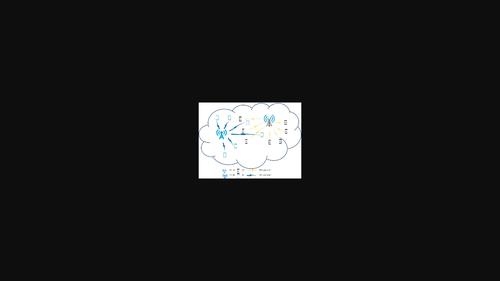当前位置:
X-MOL 学术
›
Trans. Emerg. Telecommun. Technol.
›
论文详情
Our official English website, www.x-mol.net, welcomes your
feedback! (Note: you will need to create a separate account there.)
Joint bandwidth and power resource allocation technique in multi-carrier non-orthogonal multiple access-based cognitive Internet of Things networks
Transactions on Emerging Telecommunications Technologies ( IF 2.5 ) Pub Date : 2022-07-24 , DOI: 10.1002/ett.4604 Haythem Bany Salameh 1, 2, 3 , Haitham Al‐Obiedollah 4 , Themar Arabiat 2 , Ahmad Al‐ajlouni 2, 5 , Yaser Jararweh 6
Transactions on Emerging Telecommunications Technologies ( IF 2.5 ) Pub Date : 2022-07-24 , DOI: 10.1002/ett.4604 Haythem Bany Salameh 1, 2, 3 , Haitham Al‐Obiedollah 4 , Themar Arabiat 2 , Ahmad Al‐ajlouni 2, 5 , Yaser Jararweh 6
Affiliation

|
The recent development of the Internet of Things (IoT) devices offers an intelligent concept for integrating massive number of interconnected wireless devices. However, supporting such massive number of IoT connections (hundreds of billions) requires an efficient and dynamic spectrum access strategy. Accordingly, the integration of non-orthogonal multiple access (NOMA) in the cognitive radio (CR) systems, referred to as a multi-carrier NOMA CR-enabled system, is envisioned as a potential spectrum-efficient networking paradigm that can support massive energy-efficient IoT connectivity in B5G networks while maintaining the quality of services (QoS) of the IoT devices. However, the power consumption issue of the multi-carrier NOMA CR-based system becomes as one of key challenges, especially when considering the expected massive connectivity. Accordingly, several power-aware optimization frameworks have been considered to address this issue. While most of the existing CR-based multi-carrier NOMA power allocation mechanisms only optimize the allocated per-user power, this article proposes a novel joint bandwidth and power allocation problem over each available idle channel with the aim of minimizing the overall transmission power under a set of QoS constrains. Specifically, the bandwidth of each channel is adaptively subdivided into two variable-width sub-channels, each is capable to serve a group of CR users using power-domain NOMA. This novel design is formulated as a joint optimization problem that is shown to be a non-convex. Therefore, an iterative algorithm with a second-order cone programming is deployed to handle the non-convexity of the problem, and thus, determine the solution of it. Simulation results reveal that the developed variable bandwidth adaptive power allocation mechanism outperforms the conventional equal sub-channel allocation in terms of the required transmission power, which significantly improves the energy efficiency in the system.
中文翻译:

基于多载波非正交多址接入的认知物联网联合带宽和功率资源分配技术
物联网 (IoT) 设备的最新发展为集成大量互连的无线设备提供了智能概念。然而,支持如此大量的物联网连接(数千亿)需要高效和动态的频谱访问策略。因此,将非正交多址接入 (NOMA) 集成到认知无线电 (CR) 系统中,称为支持多载波 NOMA CR 的系统,被设想为一种潜在的频谱高效网络范例,可以支持海量能量- B5G 网络中的高效物联网连接,同时保持物联网设备的服务质量 (QoS)。然而,基于多载波 NOMA CR 的系统的功耗问题成为关键挑战之一,尤其是在考虑预期的大规模连接时。因此,已经考虑了几种功率感知优化框架来解决这个问题。虽然大多数现有的基于 CR 的多载波 NOMA 功率分配机制仅优化分配的每用户功率,但本文提出了一种新颖的联合带宽和功率分配问题,旨在在每个可用空闲信道上最小化总传输功率一组 QoS 约束。具体来说,每个信道的带宽自适应地细分为两个可变宽度的子信道,每个子信道能够使用功率域 NOMA 服务于一组 CR 用户。这种新颖的设计被表述为一个联合优化问题,该问题被证明是一个非凸的。因此,部署了具有二阶锥规划的迭代算法来处理问题的非凸性,因此,确定它的解决方案。仿真结果表明,所开发的可变带宽自适应功率分配机制在所需传输功率方面优于传统的等子信道分配,显着提高了系统的能量效率。
更新日期:2022-07-24
中文翻译:

基于多载波非正交多址接入的认知物联网联合带宽和功率资源分配技术
物联网 (IoT) 设备的最新发展为集成大量互连的无线设备提供了智能概念。然而,支持如此大量的物联网连接(数千亿)需要高效和动态的频谱访问策略。因此,将非正交多址接入 (NOMA) 集成到认知无线电 (CR) 系统中,称为支持多载波 NOMA CR 的系统,被设想为一种潜在的频谱高效网络范例,可以支持海量能量- B5G 网络中的高效物联网连接,同时保持物联网设备的服务质量 (QoS)。然而,基于多载波 NOMA CR 的系统的功耗问题成为关键挑战之一,尤其是在考虑预期的大规模连接时。因此,已经考虑了几种功率感知优化框架来解决这个问题。虽然大多数现有的基于 CR 的多载波 NOMA 功率分配机制仅优化分配的每用户功率,但本文提出了一种新颖的联合带宽和功率分配问题,旨在在每个可用空闲信道上最小化总传输功率一组 QoS 约束。具体来说,每个信道的带宽自适应地细分为两个可变宽度的子信道,每个子信道能够使用功率域 NOMA 服务于一组 CR 用户。这种新颖的设计被表述为一个联合优化问题,该问题被证明是一个非凸的。因此,部署了具有二阶锥规划的迭代算法来处理问题的非凸性,因此,确定它的解决方案。仿真结果表明,所开发的可变带宽自适应功率分配机制在所需传输功率方面优于传统的等子信道分配,显着提高了系统的能量效率。











































 京公网安备 11010802027423号
京公网安备 11010802027423号